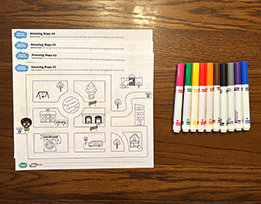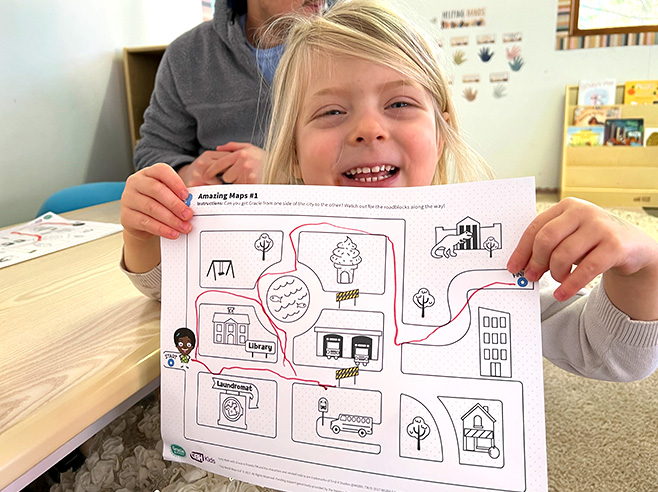Children use a map to help Gracie find the shortest route to the museum.
Materials

- Amazing Maps #1, #2, #3, and #4 (PDF)
- Crayons or markers
Preparation
- Print out multiple copies of Amazing Map #1 (PDF), enough for each child
- Print out 1–2 copies of Amazing Map #2, #3, and #4. Laminate or cover each map with clear contact paper so that you can reuse them.
Directions
- Give Amazing Map #1 to each child. Tell them that they are going to help Gracie get to the museum before it closes. Say: Gracie needs your help finding the shortest route on the map so she can get there fast.
- Have children identify the roads and landmarks on the map as well as their starting point (Gracie) and ending point (the museum). Point to a road block and explain that this means the road is blocked and they will have to take a different route.
- Ask children to trace a route to the museum with their fingers first. Then they can use a marker/crayon to draw their route along the streets.
- Have children compare their routes. Ask: Which route do you think is the shortest? Why do you think that?
- Invite children to continue drawing routes to the museum using the laminated Amazing Maps #2, #3, and #4 maps and washable markers. Each map has more roadblocks that make it harder to find a way to the museum.
